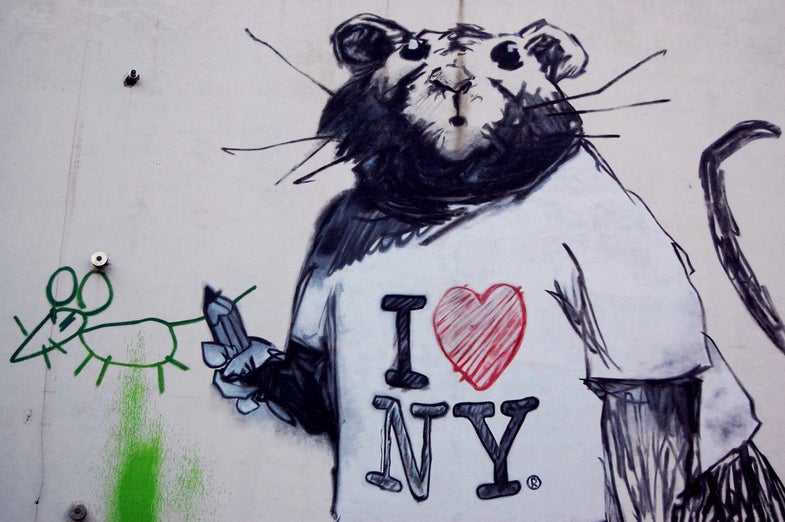The Month In Plagues: Ebola Panic, Filthy New York City Rats, And More
Here are some links on infestations, contagions, and controls from around the web this past month. Have more? Add them...

Here are some links on infestations, contagions, and controls from around the web this past month. Have more? Add them in the comments.
In outbreak news
The Ebola outbreak continues in West Africa, with nearly 5,000 deaths and more than 13,000 cases. A handful of cases have appeared in the US, too, and although the chances that there will be an outbreak like the tragedy unfolding in West Africa are miniscule, that hasn’t stopped the Ebola panic, from dubious quarantines to false claims that it’s going airborne.
That doesn’t mean the outbreak isn’t something to worry about. The situation in parts of West Africa may be growing out of control, and it’s hampering other public health efforts, including malaria control.
For more on Ebola, check out this New Yorker piece by Richard Preston, as well as a Q&A with the author and a criticism of his 1994 book, The Hot Zone.
Meanwhile, polio is still a problem in Pakistan.
And here is a cool interactive map of cholera outbreaks in both 19th-century New York City and in 2010-2014 in Haiti.
In vaccine news
Speaking of Ebola, you’re much more likely to get a fatal case of the flu this year than a hemorrhagic fever. So get your flu shot. Grandma will thank you.
Speaking of polio, the Atlantic has a piece on the anti-vaccine movement and polio to mark the 100th anniversary of Jonas Salk’s vaccine.
And speaking of the anti-vaccine movement, apparently some such groups are advertising their views on Halloween candy. Perhaps they should check out Eula Biss’s new book, On Immunity (here’s a great Harper’s Q&A with the author).
In agriculture and plant news
Researchers in Florida are working on 3-D printed insect traps to help monitor agricultural pests.
The EPA approved the next generation of controversial herbicide-resistant GMO crops.
Speaking of GMOs, here’s a story at NPR about a next-generation technology that will probably be just as controversial: Synthetic biology. And here’s one from New Scientist that explores the idea of genetically engineering crops to make them better at photosynthesis.
And a startup company called Apeel Sciences is working on a method to boost the shelf life of fruits as well as decrease the need for pesticides.
In invasive species news
Goats may help curb the invasive common reed, at least according to a new study in a Maryland marsh.
Apparently we’re training sharks to eat invasive lionfish (among other plans).
And there’s a new hypothesis on why invasive species are so invasive: maybe it has to do the environment in which they originated.
In creepy crawly news
New York City rats are apparently teeming with unsavory and unknown pathogens.
A group of scientists from Johns Hopkins are trying to vaccinate mosquitoes, which would potentially help cut cases of mosquito-borne illnesses (seems like this would be really tricky in practice).
A familiar tale of horror (for me, anyway): Rose Eveleth recounts a bed bug infestation at the Atlantic.
And a Scottish woman found a 3-inch-long leech in her nose, which she likely picked up while traveling in Southeast Asia. Sweet dreams!